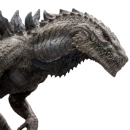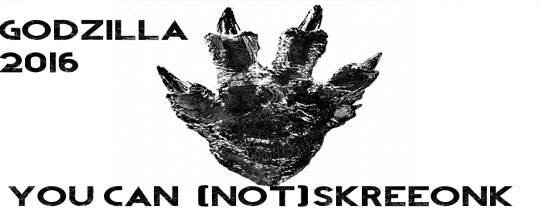REALLY new to Ultraman
Moderator: Controllers
58 posts
• Page 1 of 3 • 1, 2, 3
-

jellydonut25 - Controller
- Posts: 18874
- Joined: Wed Dec 01, 2004 1:18 am
- Location: Houston, TX via Buffalo, NY
-

Flame of Udin - Heisei Godzilla
- Posts: 1825
- Joined: Sat Aug 09, 2003 8:53 pm
- Location: Delray Beach, Florida
-

jellydonut25 - Controller
- Posts: 18874
- Joined: Wed Dec 01, 2004 1:18 am
- Location: Houston, TX via Buffalo, NY
Ultraman and Ultraseven are the essential Ultraman shows. The characters in the monster fighting team are dynamic, well established, and properly used. Stories are usually pure Sci-Fi and the monster action is appealing. High Production Values.
Ultraman Max is what modern Ultraman is all about. Kaneko, Miike, Jissoji, and a host of other high-caliber directors worked on the show, and they would all alternate every two or so episodes, so the show always had a different tone and fresh style. Stories are fun like the original two series, and there are nice nods to the old series, but they aren't distracting to the plot, for the most part.
Ultraman Nexus is an "epic", in the sense that it has a long, interesting narrative that drives the whole show. It can be a bit melodramatic at times, but it really is a captivating show, despite its rushed ending. Ultraseven X truly is the spiritual successor to the original Ultraseven. The show focuses on Sci-Fi elements, and takes a much needed break from Kaiju-centric Ultraman shows. A shame that more episodes weren't made in favor of the awful Ultra Galaxy.
Ultraman Tiga, Dyna, Gaia, and Cosmos all feature some of the worst production designs in any Tokusatsu show. Its hard to explain, but everything from their goofy sound effects to their shoddy mattes are just aggravating. Gaia's storyline is decent, but I can't recommend it. Tiga is the most readily available series after the original, but its incredibly bland, so I'd advise to avoid it.
A lot of people seem to like Ultraman Jack, but to me its where the major problems for the Ultra series start, and is generally a mixed bag. The monster attack squadron takes a backseat, and none of the characters are established well, with many of them just being poor caricatures. Stories also start relying on popular characters from former shows. Despite that, there are a few gems, and great production values, that make this show worth watching.
Ultraman Ace continues the decline. At first the show presents new ideas to the usual Ultraman story, a recurring villain is introduced and Ultraman has two hosts instead of one, but the latter is eventually scrapped for a more generic approach. Story-lines are rehashed and Ultraman cameos are used to boost ratings. Skip.
I'll probably post my thoughts on Taro, Leo, and 80 later.
Ultraman Max is what modern Ultraman is all about. Kaneko, Miike, Jissoji, and a host of other high-caliber directors worked on the show, and they would all alternate every two or so episodes, so the show always had a different tone and fresh style. Stories are fun like the original two series, and there are nice nods to the old series, but they aren't distracting to the plot, for the most part.
Ultraman Nexus is an "epic", in the sense that it has a long, interesting narrative that drives the whole show. It can be a bit melodramatic at times, but it really is a captivating show, despite its rushed ending. Ultraseven X truly is the spiritual successor to the original Ultraseven. The show focuses on Sci-Fi elements, and takes a much needed break from Kaiju-centric Ultraman shows. A shame that more episodes weren't made in favor of the awful Ultra Galaxy.
Ultraman Tiga, Dyna, Gaia, and Cosmos all feature some of the worst production designs in any Tokusatsu show. Its hard to explain, but everything from their goofy sound effects to their shoddy mattes are just aggravating. Gaia's storyline is decent, but I can't recommend it. Tiga is the most readily available series after the original, but its incredibly bland, so I'd advise to avoid it.
A lot of people seem to like Ultraman Jack, but to me its where the major problems for the Ultra series start, and is generally a mixed bag. The monster attack squadron takes a backseat, and none of the characters are established well, with many of them just being poor caricatures. Stories also start relying on popular characters from former shows. Despite that, there are a few gems, and great production values, that make this show worth watching.
Ultraman Ace continues the decline. At first the show presents new ideas to the usual Ultraman story, a recurring villain is introduced and Ultraman has two hosts instead of one, but the latter is eventually scrapped for a more generic approach. Story-lines are rehashed and Ultraman cameos are used to boost ratings. Skip.
I'll probably post my thoughts on Taro, Leo, and 80 later.
-
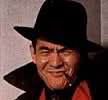
Mac - Heisei Godzilla
- Posts: 1340
- Joined: Thu Jul 13, 2006 11:40 pm
I have to respectfully disagree with Mac on the Heisei Ultraman series, TIGA, DYNA and GAIA. Granted, TIGA was the first domestic Ultraman produced half-hour series since ULTRAMAN 80, and so it takes a while for them to find their footing in terms of integrating CGI and digital mattes, but that all sorts itself out by the middle of the series. TIGA was so popular, that it relaunched the franchise which had essentially been floundering for 15 years.
While ULTRAMAN DYNA adds a little more humor to the mix, it is one of my favorites for a number of reasons, including the characters and the designs, and ULTRAMAN GAIA is the first to contain multiple series-long story arcs, that come together in the finale with Earth Monsters and Ultraman fighting the ultimate evil. In these three series there are some great, great episodes, characters, and a lot of memorable monsters; therefore I would dismiss it so offhandedly. I would say check them out for yourself, before judging them — the same with the series I will comment on in the next paragraph.
ULTRAMAN COSMOS is a kinder, gentler version of the above, and was the highest-rated of all of the recent shows. It's fun, but it was kind of a let down for me. ULTRAMAN NEXUS is the closest to a series that would appeal to Americans into shows like STARGATE and BATTLESTAR GALACTICA—set very much in the real world, and has some very deadly consequences for several characters during the series. Recommended for its bravado in turning the genre on its head. ULTRA SEVEN X takes it a step further, but it felt as though it had a lack of focus. ULTRAMAN MAX returns to the basics, but felt bland to me, while ULTRAMAN MEBIUS picked up the ball and ran with it.
Of course, the Japanese-impaired might not get all of the story arcs and dialogue and character development and so-forth, because most of these series have not been subbed or dubbed, which can cause misunderstandings, and misreadings. So, watching with an open mind is highly recommended. Now, one of my favorite series is RETURN OF ULTRAMAN (aka "Ultraman Jack"). One of the reasons is the great character development only hinted at in the earlier series (save for ULTRA Q). In ULTRAMAN and ULTRA SEVEN, you see little of the private lives of the members of the Science Patrol and Ultra Garrison, while there is a lot more in this series.
We get to meet the main character, Hideki Goh (Jiro Dan), before he takes on the powers of a new Ultraman, and meet his surrogate family (his father was killed in a mountain-climbing accident, which is flash-backed in episode 3), the Sakatas, who also are orphans (perhaps from a monster attack). The eldest was a former race car driver, and now owns Sakata Motors, where he hopes to coach Goh as a world-class racer. His younger sister, Aki, is Goh's love interest, and the youngest is their brother, Jiro. The eldest Sakata is played by Shin Kishida.
It is not until after Goh assumes the powers of a new Ultraman—who sought him out because of his bravery in rescuing a boy from a monster attack—that he is sought out by the captain of the Monster Attack Team to join their organization. The stories have a mix of the private lives of Goh and the Sakata's, as well as the members of the Monster Attack Team (MAT). One of the episodes, directed by Ishiro Honda, features the sub-captain, Takeshi Minami (played by the late Shunsuke Ikeda); while another focuses on the dark past of the father of another MAT member, and so on. Then, the series goes through a complete format change in a dramatic two-part episode 37-38, which refocuses the series—I can't say much more without spoilers.
Episode 34 was based on a story written by Shinichiro Kobayashi, who later rewrote this tale, changed and added more characters, and it became GODZILLA VS. BIOLLANTE! It's even set around Lake Ashino! Another outstanding episode is 35, which is a tour-de-force of story and avant-garde photography (and was written by Shin Kishida). Some of RETURN OF ULTRAMAN's monsters seem to get wonky in the last 13 episodes of the series, while the stories and the action remains taught, and refocuses on the efforts of the Monster Attack Team, similar in style to the original ULTRAMAN. The music score by Tohru Fuyuki (ULTRA SEVEN) is a definite plus. The series was shot and produced at Toho Studios, and features a lot of Toho production staff and actors, including guest appearances by Kenji Sahara, Susumu Fujita, etc. Ishiro Honda directs several episodes, including the finale. Well worth checking out—its a favorite of Japanese fans (including Hideaki "Evangelion" Anno and Shinji "Gamera" Higuchi).
The remastered RETURN OF ULTRAMAN series, which was previously available on DVD from Beam Entertainment, is now being released on DVD by Bandai Entertainment for the low price of 1800 Yen per volume (about 1400 Yen from Amazon Japan), which will street on July 23 (in Japanese only): http://www.amazon.co.jp/gp/product/B003IO8J80/
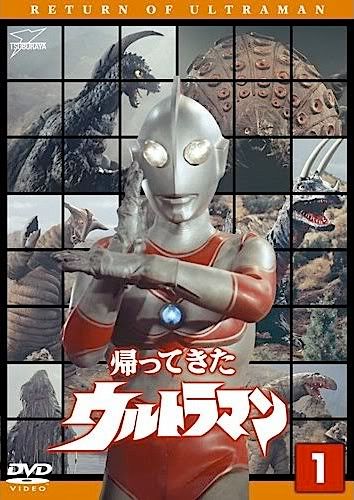
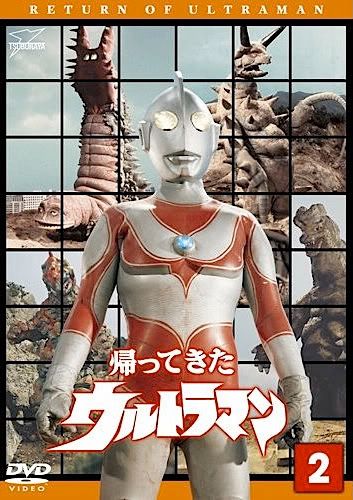
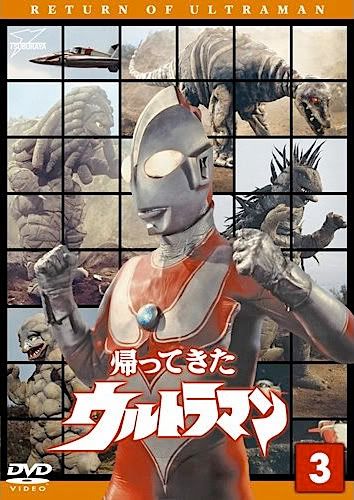
Check out the promotional video:
http://www.amazon.co.jp/gp/mpd/permalink/mK56618O6QFQS
While ULTRAMAN DYNA adds a little more humor to the mix, it is one of my favorites for a number of reasons, including the characters and the designs, and ULTRAMAN GAIA is the first to contain multiple series-long story arcs, that come together in the finale with Earth Monsters and Ultraman fighting the ultimate evil. In these three series there are some great, great episodes, characters, and a lot of memorable monsters; therefore I would dismiss it so offhandedly. I would say check them out for yourself, before judging them — the same with the series I will comment on in the next paragraph.
ULTRAMAN COSMOS is a kinder, gentler version of the above, and was the highest-rated of all of the recent shows. It's fun, but it was kind of a let down for me. ULTRAMAN NEXUS is the closest to a series that would appeal to Americans into shows like STARGATE and BATTLESTAR GALACTICA—set very much in the real world, and has some very deadly consequences for several characters during the series. Recommended for its bravado in turning the genre on its head. ULTRA SEVEN X takes it a step further, but it felt as though it had a lack of focus. ULTRAMAN MAX returns to the basics, but felt bland to me, while ULTRAMAN MEBIUS picked up the ball and ran with it.
Of course, the Japanese-impaired might not get all of the story arcs and dialogue and character development and so-forth, because most of these series have not been subbed or dubbed, which can cause misunderstandings, and misreadings. So, watching with an open mind is highly recommended. Now, one of my favorite series is RETURN OF ULTRAMAN (aka "Ultraman Jack"). One of the reasons is the great character development only hinted at in the earlier series (save for ULTRA Q). In ULTRAMAN and ULTRA SEVEN, you see little of the private lives of the members of the Science Patrol and Ultra Garrison, while there is a lot more in this series.
We get to meet the main character, Hideki Goh (Jiro Dan), before he takes on the powers of a new Ultraman, and meet his surrogate family (his father was killed in a mountain-climbing accident, which is flash-backed in episode 3), the Sakatas, who also are orphans (perhaps from a monster attack). The eldest was a former race car driver, and now owns Sakata Motors, where he hopes to coach Goh as a world-class racer. His younger sister, Aki, is Goh's love interest, and the youngest is their brother, Jiro. The eldest Sakata is played by Shin Kishida.
It is not until after Goh assumes the powers of a new Ultraman—who sought him out because of his bravery in rescuing a boy from a monster attack—that he is sought out by the captain of the Monster Attack Team to join their organization. The stories have a mix of the private lives of Goh and the Sakata's, as well as the members of the Monster Attack Team (MAT). One of the episodes, directed by Ishiro Honda, features the sub-captain, Takeshi Minami (played by the late Shunsuke Ikeda); while another focuses on the dark past of the father of another MAT member, and so on. Then, the series goes through a complete format change in a dramatic two-part episode 37-38, which refocuses the series—I can't say much more without spoilers.
Episode 34 was based on a story written by Shinichiro Kobayashi, who later rewrote this tale, changed and added more characters, and it became GODZILLA VS. BIOLLANTE! It's even set around Lake Ashino! Another outstanding episode is 35, which is a tour-de-force of story and avant-garde photography (and was written by Shin Kishida). Some of RETURN OF ULTRAMAN's monsters seem to get wonky in the last 13 episodes of the series, while the stories and the action remains taught, and refocuses on the efforts of the Monster Attack Team, similar in style to the original ULTRAMAN. The music score by Tohru Fuyuki (ULTRA SEVEN) is a definite plus. The series was shot and produced at Toho Studios, and features a lot of Toho production staff and actors, including guest appearances by Kenji Sahara, Susumu Fujita, etc. Ishiro Honda directs several episodes, including the finale. Well worth checking out—its a favorite of Japanese fans (including Hideaki "Evangelion" Anno and Shinji "Gamera" Higuchi).
The remastered RETURN OF ULTRAMAN series, which was previously available on DVD from Beam Entertainment, is now being released on DVD by Bandai Entertainment for the low price of 1800 Yen per volume (about 1400 Yen from Amazon Japan), which will street on July 23 (in Japanese only): http://www.amazon.co.jp/gp/product/B003IO8J80/



Check out the promotional video:
http://www.amazon.co.jp/gp/mpd/permalink/mK56618O6QFQS
Last edited by August on Sun Jul 04, 2010 12:45 pm, edited 2 times in total.
August Ragone
Showa GAMERA Special Features Producer
Blog
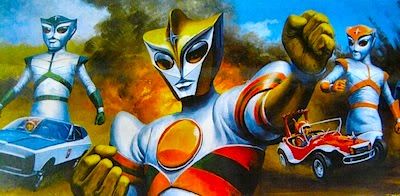
Showa GAMERA Special Features Producer
Blog

- August
- Burning Godzilla
- Posts: 2954
- Joined: Sat Jul 26, 2003 7:23 pm
- Location: San Fransinister, Karloffornia
August have you heard anything about any upcoming Blu Ray releases for the showa era Ultramans? I know you've mentioned some things about a possilble Ultra Q release but I'm more then willing to shell out some cash for some blu ray which would hopefully have some english subs like the last movie release did...
-

king_ghidorah - Meltdown Godzilla
- Posts: 9917
- Joined: Sat Aug 09, 2003 12:27 am
- Location: Ohio
My friends and I used to watch tons of this stuff in the early days of VHS, because we just wanted to see them — even with limited or no Japanese language skills — and the same was true of Anime Clubs across the US and Canada. Everyone was just hungry to see these, and people watched them raw, because there was no other way to see them. If you want to wait for commercial releases with English Subs, I would NOT hold my breath... You will surely die before that happens. It's more likely that a Fansub Group will do these before legit versions are ever released (if ever). So, I would just watch them (granted, ULTRA SEVEN is the talkiest of them all, IMHO).
As for Blu-ray releases, I don't expect them to have English Subs, either. I can see them doing it with the movies, but not with the television series. I suppose it is possible, but highly unlikely. Recently, ULTRAMAN and ULTRA SEVEN have been further remastered for HD, and these are now running on the Family Gekijo (Theater) cable network. These remasters would be those prepared for a Blu-ray release. No dates have yet been set for any such releases at this time. Stay tuned for more details as they develop...
As for Blu-ray releases, I don't expect them to have English Subs, either. I can see them doing it with the movies, but not with the television series. I suppose it is possible, but highly unlikely. Recently, ULTRAMAN and ULTRA SEVEN have been further remastered for HD, and these are now running on the Family Gekijo (Theater) cable network. These remasters would be those prepared for a Blu-ray release. No dates have yet been set for any such releases at this time. Stay tuned for more details as they develop...
August Ragone
Showa GAMERA Special Features Producer
Blog

Showa GAMERA Special Features Producer
Blog

- August
- Burning Godzilla
- Posts: 2954
- Joined: Sat Jul 26, 2003 7:23 pm
- Location: San Fransinister, Karloffornia
I'll definitely re-watch some of Ultraman Jack later on. I think the problem for me was, I had seen Ace, Taro, and Leo before Jack, so when some of the basic mechanics for those shows appeared (Bracelet, Tragic Deaths etc.) it seemed old hat.
For those interested in Taro, I uploaded my favorite fight scene from that series...
http://www.youtube.com/watch?v=IVpQrgAZmw8
For those interested in Taro, I uploaded my favorite fight scene from that series...
http://www.youtube.com/watch?v=IVpQrgAZmw8
-

Mac - Heisei Godzilla
- Posts: 1340
- Joined: Thu Jul 13, 2006 11:40 pm
There's no such program entitled "Ultraman Jack" (the name was made up for Bandai merchandizing in 1984 when they launched t he "Ultra Kaiju Series" toy line), in the show the character is only referred to as "Ultraman". In the official program guides and commercial magazines and books in the early 1970s, the character was referred to as "Shin (New) Ultraman" or simply, "Shin Man" for short. I was introduced to the show in 1973, and will never call him "Ultraman Jack"... 
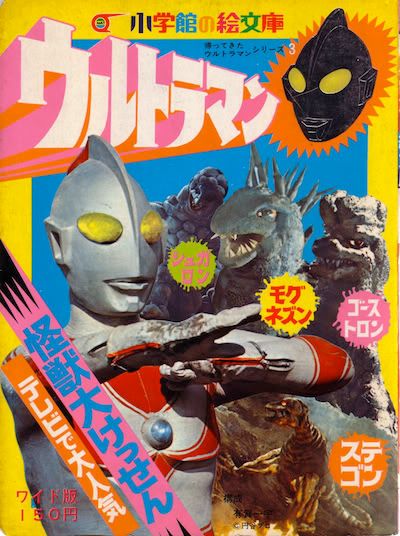
My first RETURN OF ULTRAMAN book, purchased so long ago...
By the way, when I finally got to see episodes of ULTRAMAN TARO, around 1981, I was so very disappointed... Great Ultraman design, lousy show (horrible soundtrack)... it took years for me to get used to TARO. At least ULTRAMAN LEO brought back some balls (and a Tohru Fuyuki score) to the series, but the wacky scripts of the later episodes went right back into TARO territory. It's too bad... originally TARO was going to be far more serious—a cross between ULTRA SEVEN and OPERATION: MYSTERY (another Tsuburaya Productions show), but with more giant monsters. Then, it was decided to go for younger children than the previous series, and they threw everything in but the kitchen sink...

My first RETURN OF ULTRAMAN book, purchased so long ago...
By the way, when I finally got to see episodes of ULTRAMAN TARO, around 1981, I was so very disappointed... Great Ultraman design, lousy show (horrible soundtrack)... it took years for me to get used to TARO. At least ULTRAMAN LEO brought back some balls (and a Tohru Fuyuki score) to the series, but the wacky scripts of the later episodes went right back into TARO territory. It's too bad... originally TARO was going to be far more serious—a cross between ULTRA SEVEN and OPERATION: MYSTERY (another Tsuburaya Productions show), but with more giant monsters. Then, it was decided to go for younger children than the previous series, and they threw everything in but the kitchen sink...
Last edited by August on Sun Jul 04, 2010 3:02 pm, edited 2 times in total.
August Ragone
Showa GAMERA Special Features Producer
Blog

Showa GAMERA Special Features Producer
Blog

- August
- Burning Godzilla
- Posts: 2954
- Joined: Sat Jul 26, 2003 7:23 pm
- Location: San Fransinister, Karloffornia
58 posts
• Page 1 of 3 • 1, 2, 3
Return to Ultraman and Japanese Heroes
Who is online
Users browsing this forum: No registered users and 3 guests

